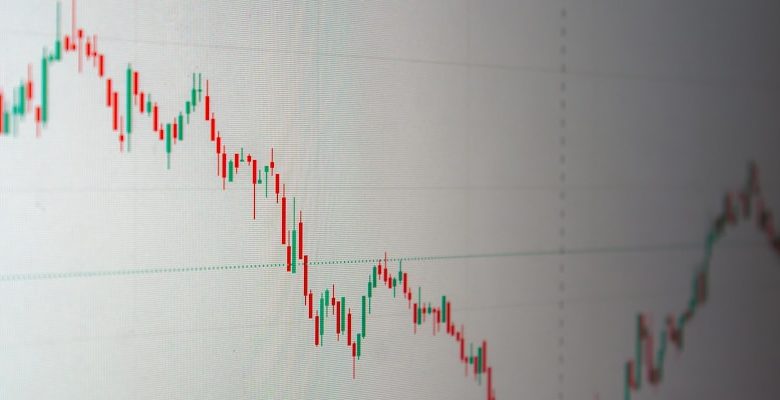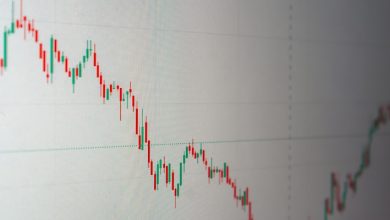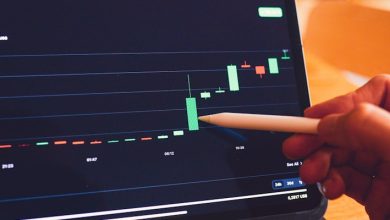The Role of Support and Resistance Levels in Crypto Trading

- The Basics of Support and Resistance Levels in Crypto Trading
- How to Identify Strong Support and Resistance Levels in the Crypto Market
- The Significance of Support and Resistance Levels in Making Trading Decisions
- Strategies for Trading Crypto Based on Support and Resistance Levels
- The Psychological Aspect of Support and Resistance Levels in Crypto Trading
- Utilizing Support and Resistance Levels to Improve Your Crypto Trading Performance
The Basics of Support and Resistance Levels in Crypto Trading
Support and resistance levels are crucial concepts in the world of crypto trading. These levels represent points on a chart where the price of a cryptocurrency is likely to encounter obstacles as it moves up or down. Understanding these levels can help traders make informed decisions about when to buy or sell.
Support levels are areas where the price of a cryptocurrency tends to stop falling and may even reverse course. Traders often see these levels as opportunities to buy, as they believe the price is unlikely to drop below this point. On the other hand, resistance levels are areas where the price tends to stop rising and may reverse. Traders often see these levels as opportunities to sell, as they believe the price is unlikely to surpass this point.
Support and resistance levels are not set in stone and can change over time as market conditions evolve. Traders use technical analysis to identify these levels by looking at historical price data and chart patterns. By recognizing these levels, traders can set price targets, place stop-loss orders, and manage their risk more effectively.
How to Identify Strong Support and Resistance Levels in the Crypto Market
Identifying strong support and resistance levels in the crypto market is crucial for successful trading. These levels act as barriers that the price of a cryptocurrency often struggles to surpass. By recognizing these levels, traders can make informed decisions on when to buy or sell.
One way to identify support and resistance levels is by looking at historical price data. Analyzing past price movements can help you pinpoint areas where the price has consistently reversed or stalled. These areas are likely to act as strong support or resistance levels in the future.
Another method is to use technical analysis tools such as trend lines, moving averages, and Fibonacci retracement levels. These tools can help you visualize where support and resistance levels are likely to form based on mathematical calculations and patterns in the price data.
It’s also essential to pay attention to market sentiment and news events that could impact the price of a cryptocurrency. Sudden shifts in sentiment or major news announcements can lead to the formation of new support and resistance levels.
Overall, identifying strong support and resistance levels in the crypto market requires a combination of technical analysis, historical data, and an understanding of market dynamics. By mastering this skill, traders can improve their chances of making profitable trades in the volatile world of cryptocurrency trading.
The Significance of Support and Resistance Levels in Making Trading Decisions
Understanding the significance of support and resistance levels is crucial when making trading decisions in the world of cryptocurrency. These levels act as key indicators of potential price movements, helping traders determine optimal entry and exit points for their trades. Support levels represent the price points at which an asset is likely to stop falling and reverse its direction, while resistance levels indicate where the price is likely to stop rising and turn back down.
By analyzing historical price data, traders can identify these levels and use them to make informed decisions about when to buy or sell a particular cryptocurrency. When the price of an asset approaches a support level, it may present a buying opportunity as traders anticipate a price reversal. Conversely, when the price approaches a resistance level, it may be a signal to sell as the asset is likely to face selling pressure and reverse its upward trend.
Support and resistance levels can also help traders set stop-loss orders to manage their risk effectively. By placing stop-loss orders just below support levels when buying or just above resistance levels when selling, traders can limit their potential losses if the market moves against them. This risk management strategy is essential for protecting capital and maximizing profits in the volatile world of cryptocurrency trading.
Strategies for Trading Crypto Based on Support and Resistance Levels
When trading in the crypto market, it is essential to have a solid understanding of support and resistance levels. These levels can provide valuable insights into potential price movements, helping traders make informed decisions. Here are some strategies to consider when trading crypto based on support and resistance levels:
- Identify key support and resistance levels on the price chart. These levels are areas where the price has historically struggled to move beyond (resistance) or has found support (support). Understanding these levels can help traders anticipate where the price may reverse or consolidate.
- Use support and resistance levels to set entry and exit points. When the price approaches a support level, it may be a good time to buy, as there is a higher likelihood of a price bounce. Conversely, when the price nears a resistance level, it may be a signal to sell or take profits.
- Pay attention to the volume at support and resistance levels. High trading volume at these levels can indicate strong buying or selling pressure, confirming the significance of the levels. Low volume, on the other hand, may suggest that the price could break through the level.
- Consider using support and resistance levels in conjunction with other technical indicators, such as moving averages or trend lines, to confirm trading signals. Combining multiple indicators can help reduce false signals and increase the probability of successful trades.
- Regularly monitor and adjust support and resistance levels as the market evolves. Price levels are dynamic and can shift over time, so it is important to stay up to date with market movements and adjust your trading strategy accordingly.
By incorporating support and resistance levels into your trading strategy, you can improve your decision-making process and increase your chances of success in the volatile crypto market. Remember to practice risk management and never invest more than you can afford to lose.
The Psychological Aspect of Support and Resistance Levels in Crypto Trading
The psychological aspect of support and resistance levels in crypto trading plays a crucial role in determining market trends and price movements. Traders often rely on these levels to make informed decisions about when to buy or sell a particular cryptocurrency.
Support levels act as a psychological barrier where the price is expected to stop falling and potentially reverse its direction. Traders see these levels as areas of opportunity to enter the market and take advantage of potential price increases. On the other hand, resistance levels represent a point where the price is likely to face selling pressure and struggle to move higher.
Understanding the psychological factors that influence support and resistance levels can help traders anticipate market movements and adjust their strategies accordingly. Fear and greed are common emotions that drive market participants to buy or sell at specific price points, leading to the formation of support and resistance levels.
By analyzing historical price data and market sentiment, traders can identify key support and resistance levels that are likely to impact future price movements. This analysis can help traders set realistic profit targets and stop-loss levels to manage their risk effectively. Additionally, being aware of the psychological aspect of support and resistance levels can help traders avoid emotional decision-making and stick to their trading plan.
In conclusion, the psychological aspect of support and resistance levels is an essential factor to consider in crypto trading. By understanding how market participants react to certain price levels, traders can make more informed decisions and improve their overall trading performance.
Utilizing Support and Resistance Levels to Improve Your Crypto Trading Performance
When trading cryptocurrencies, utilizing support and resistance levels can significantly improve your performance. Support levels are price points where a downtrend can be expected to pause or reverse, while resistance levels are price points where an uptrend can be expected to pause or reverse. By identifying these key levels, traders can make more informed decisions about when to enter or exit trades.
One effective strategy for incorporating support and resistance levels into your trading is to look for confirmation from other indicators or chart patterns. This can help validate the significance of a particular level and increase the likelihood of a successful trade. Additionally, it’s important to consider the volume of trading activity at these levels, as higher volume can indicate stronger levels of support or resistance.
Another useful technique is to draw trendlines connecting the highs and lows of an asset’s price movements. These trendlines can act as dynamic levels of support and resistance, guiding your trading decisions as the market evolves. By combining trendlines with horizontal support and resistance levels, you can create a more comprehensive trading plan that takes into account both historical price data and current market trends.



